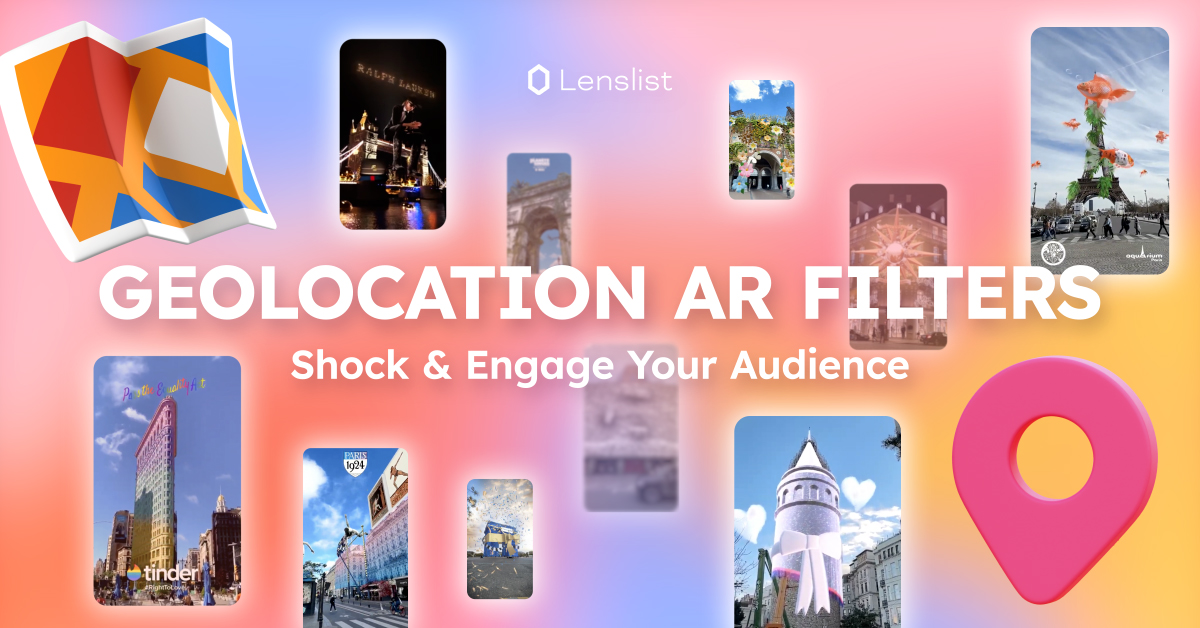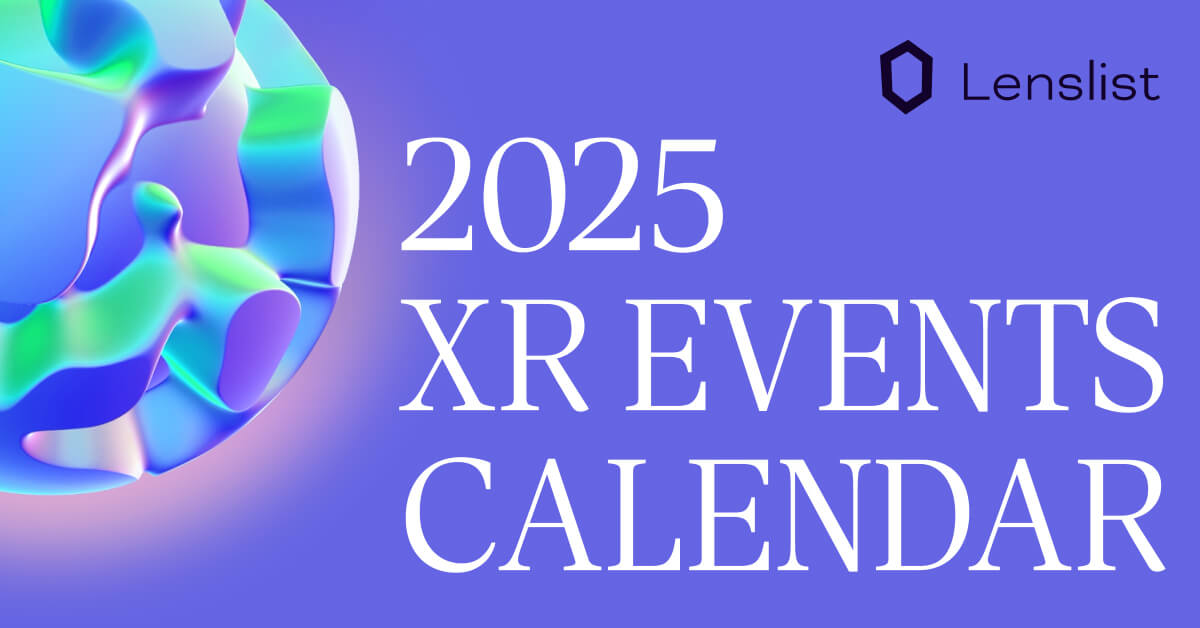Create AR Filters with AI. The Best GenAI Tools & Integrations from Lens Studio, Effect House, and 8thWall

In the tech industry, innovation is the only way to progress. Whether it’s a new tool or a platform update, each next step has the potential to reshape how we work, create, and connect. Augmented Reality, a space thriving on technological advancements, is now being transformed again, this time by the power of GenAI.
AI is already an integral part of many industries, and as expected, the hype has also reached the XR space. While AI-powered filters are loved by users, it’s the AR Developers who benefit most. With AI, building high-quality, immersive AR experiences is becoming faster, easier, and more accessible, even without expert-level coding skills.
Let’s explore how three of the biggest AR platforms—Effect House (TikTok), Lens Studio (Snapchat), and 8th Wall (WebAR)—are integrating AI tools to support Developers and brands in the creative process.
Lens Studio
❗NEW: Lens Studio iOS App and Web Tool
Snapchat just dropped a brand-new way to create AR Lenses, no experience required. With the launch of the experimental Lens Studio iOS App and Web Tool, anyone can now use AI to generate custom effects in minutes. Just type what you want, and watch it come to life, faster, smarter and easier.
While the desktop version is still a go–to tool to create AR Lenses for Snapchat, the new app is a great way to introduce AR to new audiences, making it an accessible, quick, and shareable way for all users to personalize their content and play with AR creation.
Read more here.
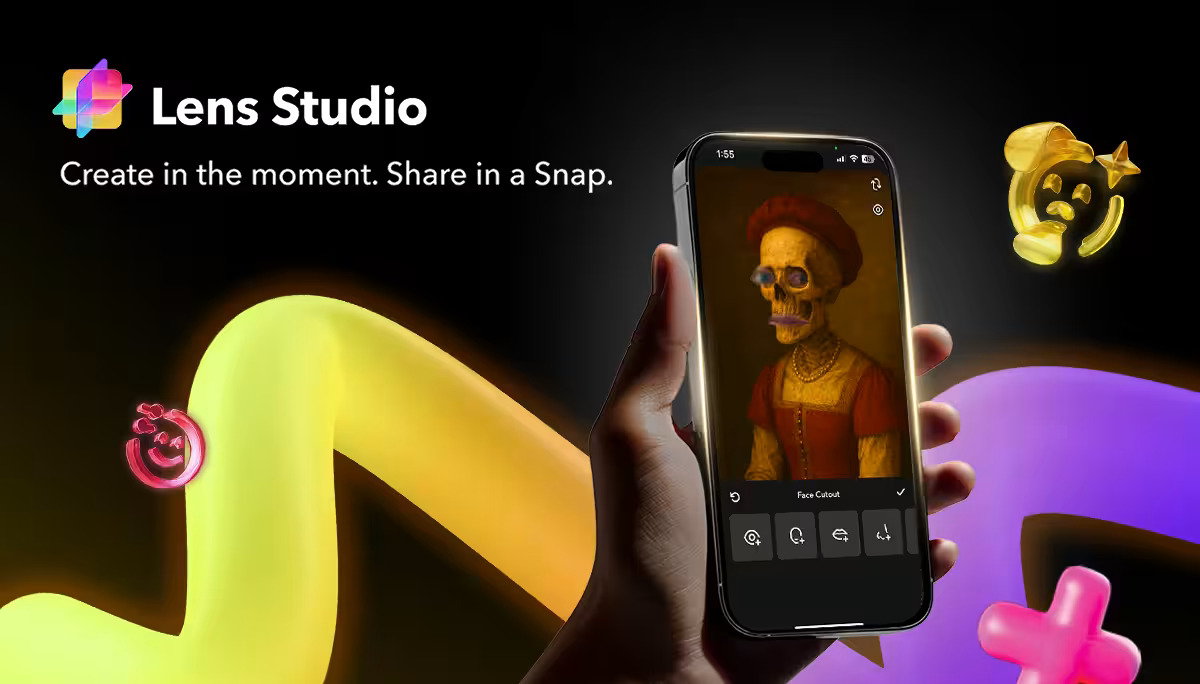 Source: Snap
Source: SnapGenAI Suite
Following its official release from beta in 2024, Snapchat introduced the GenAI Suite—a collection of powerful Generative AI features in Lens Studio, powered by proprietary SnapML technology. Designed to simplify the AR creation process and drive developer creativity, it reduces the time and effort spent searching for assets or requiring the skills to build them from scratch.
Snap Co-Founder Bobby Murphy personally announced the new update at AWE USA 2024.
At the heart of the suite is the AI Assistant, an integrated support tool that provides instant answers to your questions directly within Lens Studio, helping you stay focused and productive. The suite also includes advanced creation tools like ML Face Effects, which let you generate unique, hyper-realistic facial effects; Immersive ML, which applies real-time stylized transformations across the face, body, and environment; and 3D Asset Generation, allowing creators to generate custom 3D objects from a simple text or image prompt.
For character development, Head Morph enables the creation of fantastical 3D heads, like aliens or monsters, using Face Mesh technology.
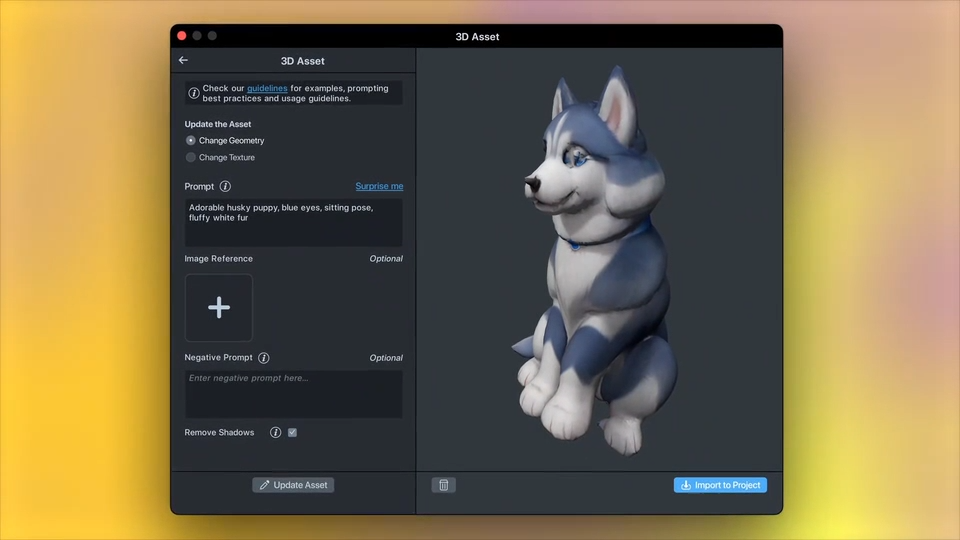 Source: Snap
Source: SnapAdditionally, creators can use Generative AI to produce custom Face Masks, Textures, and Materials within minutes, making complex visual transformations faster and more accessible. With the GenAI Suite, Snapchat empowers developers to bring ambitious, immersive AR ideas to life with unprecedented ease and speed.
See details and examples here.
Snapchat Spectacles
Beyond Lens creation for the Snapchat app, last year Snap allowed developers and creators to jump on a whole new platform – Spectacles. Released last year at the Snap Partner Summit, Snap’s AR glasses enable developers to experiment with a host of brand new features and integrations.
While AI-enhanced Lenses can’t be published to the Spectacles Lens Explorer yet, developers are already using Experimental API and connecting Spectacles Lenses with AI tools to unlock variety, customization and expand Spectacles’ capabilities even further.
One of the best examples is the Décor Assistant by Elsa Farrokhzad, which won a prize in the Open Source category of the Spectacles Community Challenge we host each month together with Snap. An AI-AR powered interior design assistant for Snap Spectacles helps users visualize room redesigns using computer vision, GPT-4o, and DALL-E 3.
Effect House
On TikTok, the most successful AR Effects emerge from viral trends. Creators must react quickly, developing experiences that engage millions of users within a fast-paced meme culture, where trends stay relevant for only a short time.
by maximkuzlin
by art_by__alyssa
by paigepiskin
That’s where AI comes in, enabling AR Creators to think fast and act even faster. The broad integration of Artificial Intelligence makes Effect House not only an efficient platform for experienced developers, but also a more accessible entry point for new Creators. Here’s how the platform incorporates AI into its tools:
Create with AI
The Create with AI feature is the fastest way to make AR Effects. Simply write a prompt or modify an existing concept, and you can instantly preview the generated AR Effect, ready to submit directly to TikTok or refine manually. It’s a perfect solution for fast-moving Creators, beginners, or marketers looking into the hype.
See details and examples here.
AI Editor
The AI Editor is a powerful feature in Effect House that allows you to create and customize AI Effects by applying personalized styles. You begin by selecting a preset base model, and then tailor it using a text prompt and additional settings.
The editor opens with an intuitive interface where you can preview model prompts and generate images based on the default or customized input. For example, you can transform the original model by changing tulips to cherry blossoms and adjusting butterfly colors from yellow to blue, using clear and descriptive language.
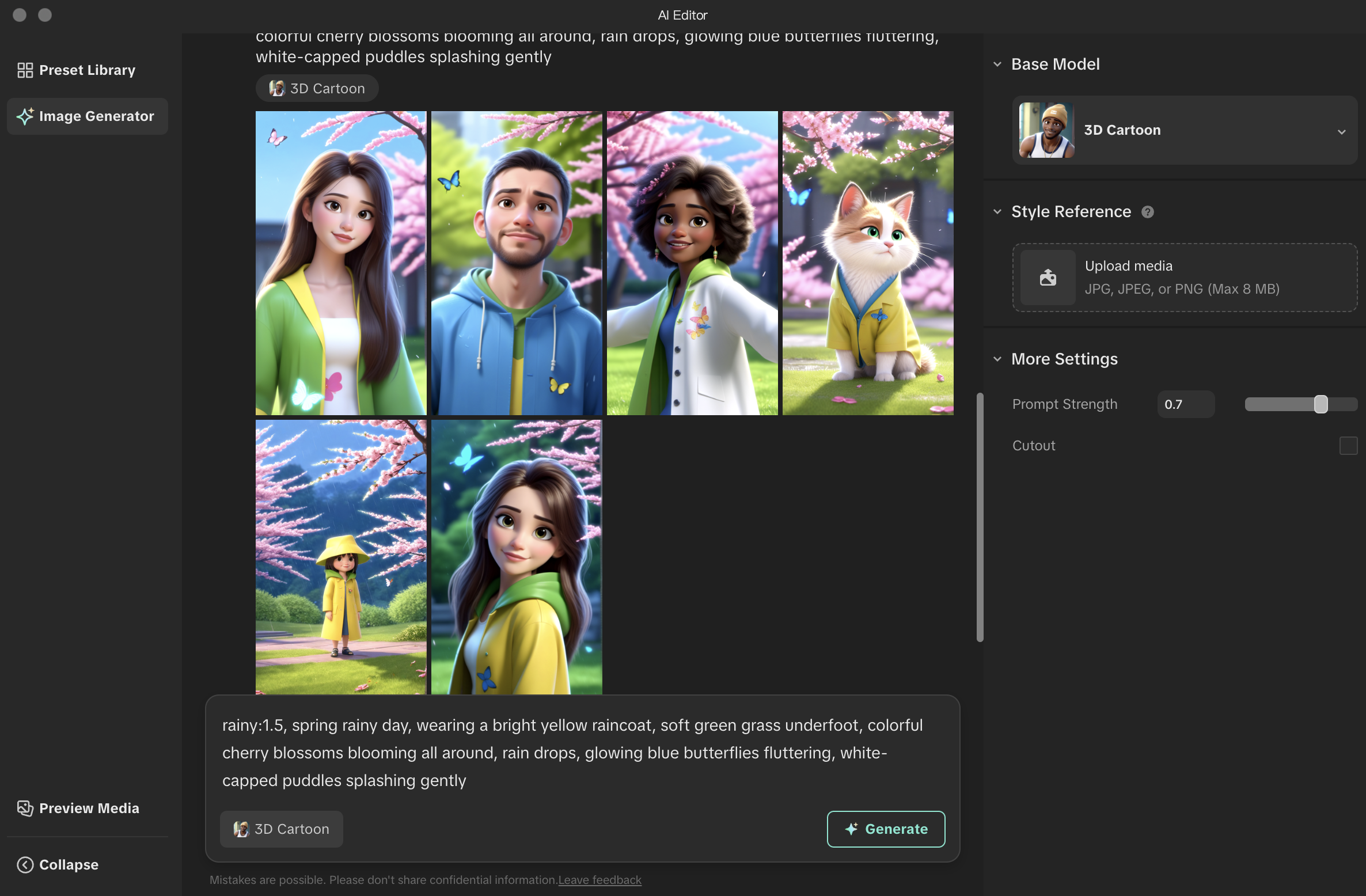 Source: Effect House
Source: Effect HouseOnce generated, your custom visuals appear instantly, and you can apply the model directly to your effect or continue refining it. If you’d like to explore different visual styles, you can easily switch base models, from a 3D Cartoon to a Realistic style, for instance, through the Inspector panel. With just a few clicks, your updated model is applied, giving you full creative control to bring your vision to life.
See details and examples here.
Using GenAI To Create TikTok Effects
Generative AI is a powerful tool for creators looking to build Augmented Reality effects on TikTok without starting from scratch. By turning text prompts into original visuals, it enables rapid prototyping and creative asset generation.
Tools like TikTok’s in-app AI Effects (e.g., AI Greenscreen or AI Art) and third-party platforms such as DALL·E 2 and Midjourney allow you to generate images based on your vision, which can then be imported into Effect House to enhance your AR projects.
 Source: Effect House
Source: Effect HouseWhether you’re using AI to mock up ideas or build final assets, you can incorporate them into features like Clothing Segmentation, Face Stickers, and 3D Face. For 3D assets, newer text-to-3D tools are also supported.
When using AI-generated content, it’s essential to follow TikTok’s Effect Guidelines and ensure you have the proper rights for all assets. To promote transparency, TikTok recommends labelling such effects with “AI” in their names, especially if they significantly alter or replace original content.
By combining the power of Generative AI with Effect House, creators can unlock new levels of creativity while maintaining authenticity and trust within the community.
See details and examples here.
8th Wall
8th Wall, similarly to Lens Studio and Effect House, has embraced the power of Generative AI. The platform integrated tools like DALL·E, Stable Diffusion, Blockade Labs, Inworld AI, and more into its WebAR platform, allowing developers to generate images, animations, textures, and even character behaviour using simple text or image prompts.
To make this accessible to creators of all skill levels, 8th Wall introduced GenAI Modules—plug-and-play components that eliminate setup complexity and let developers focus on building next-level immersive, smart AR experiences.
OpenAI Module
The OpenAI Module connects 8th Wall projects with tools like DALL·E for text-to-image generation and ChatGPT for real-time, conversational user interaction. With built-in components and secure API handling, developers can add creative or dynamic features to their WebAR projects in minutes. Users can type prompts to generate visuals or have personalized dialogues, making each AR experience more interactive and user-driven.
Inworld AI Module
Inworld AI brings emotionally intelligent, lifelike characters to WebAR using 8th Wall’s integration. These AI characters can express emotion, remember past interactions, respond naturally, and maintain in-context conversations. With just a simple module install, developers can place characters into their scenes that interact with users in human-like ways—ideal for storytelling, branded NPCs, or immersive retail experiences.
AI & AR: An Easy, Accessible, And Intuitive Way to Create
While AR platforms vary in how they integrate AI into the creative process, they all share one message: generative AI is an essential tool that supports developers at every stage.
Effect House prioritizes speed and accessibility, making it ideal for jumping on TikTok trends with AI-generated textures and rapid effect creation. Lens Studio offers more advanced, real-time tools, such as 3D asset generation and facial transformations, perfect for building immersive Snapchat experiences. Meanwhile, 8th Wall stands out with its AI integrations for WebAR, using tools like DALL·E, Inworld AI, and ChatGPT to power interactive, deeper browser-based experiences.
Despite their differences, each platform uses AI to make AR creation faster, more accessible, and more imaginative for everyone.
by florenciaraffa.ok
by filtersbyjulia
by noirca
Artificial Intelligence As The Future Of Digital Creation
Nothing will ever replace the talent and creativity of AR creators—That is and will always be true. But AI-powered tools are quickly becoming essential companions in keeping up with the fast-paced evolution of the tech industry. By simplifying workflows and lowering the barrier to entry, AI is making Augmented Reality more accessible than ever.
As a result, more people can explore AR, boosting its creative, social, and branded potential and shaping a more immersive digital future for everyone.
Read more about the potential of Artificial Intelligence on our blog:
⭐ How AI Is Transforming Augmented Reality
⭐ AI x Social Media | Improving the Users’ Experience

